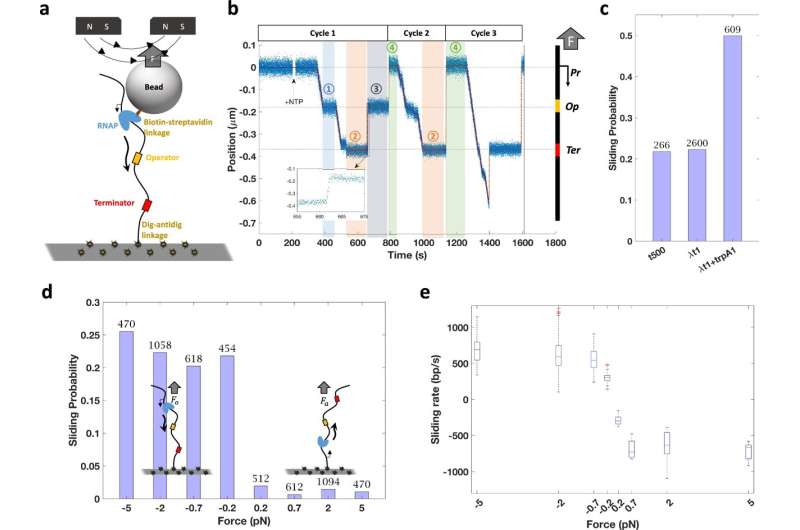Recent research sheds light on the influence of mechanical forces on gene expression, challenging traditional views. Scientists at Clemson University have uncovered a novel mechanism where RNA polymerase can recycle and transcribe DNA segments multiple times based on force direction. This groundbreaking study, published in Nature Communications, opens new avenues for understanding genome regulation and potential therapeutic interventions.

The detailed mechanics of gene expression have long been a mystery to scientists, however, recent research led by Laura Finzi and David Dunlap from Clemson University has added another twist—the impact of mechanical forces in an otherwise seemingly purely molecular world. The discovery could completely change our understanding of the role physical forces play in gene regulation, shifting the paradigm from which scientists are working.
At the center of that finding is evidence that tension and torsion can cripple gene transcription. However, although the mechanical forces of DNA compaction and unwinding were known to contort this process, their precise impacts have so far evaded detection. These results illustrate a force-directed recycling mechanism for RNA polymerase, the enzyme that transcribes DNA into RNA. A system in which different amounts of force result in an expression in the DNA sequence can shape things in multiple ways, providing an additional layer of complexity to our understanding of gene regulation.
These findings have broad implications for the regulation of the genome. The study uncovers a dynamic aspect of gene regulation not previously appreciated. Our findings indicate that the RNA polymerase can reuse segments of DNA over and over if the applied force prevents it from coming off — a behavior that implies a more dynamic, responsive system of gene expression. That insight may well pave the way for future therapeutic interventions, as a fresh point of attack in gene regulation.
The range of possibilities this research opens makes us wonder what the future holds. As a result of the fact that we are now able to map in space and time where forces act on the genome, this presents an exciting revolution for how we investigate cellular processes. This could lead to scientists predicting patterns of gene transcription based on force dynamics, which would allow for more customized treatment of each patient depending on the specialized level of their disease.
This work also establishes research that stands at the unique intersection of physics and genetics, showcasing work in cross-disciplinary biology in an era where this area of study is now common. In doing so, it shows the power of basic principles from physics to elucidate major biological questions and sets the stage for exploring new frontiers at this interface between fields.
The other incredible part about this study is that it has some very useful applications. Understanding how mechanical forces affect gene expression could also lead to novel treatment options for genetic diseases or improved desired traits. For the hundreds of diseases that have eluded gene therapy, these findings could guide the creation of new therapies that exploit such forces to regulate gene expression in specific ways.
This is a new frontier in the personalization of medicine, Being able to map the distribution of forces in individual cells could add a new dimension to disease diagnosis and therapy. Hopefully, this will also improve accuracy in the delivery of therapies and reduce off-target effects with maximal therapeutic benefits.
This, as we peel back the layers of understanding in the regulation of our genes, simply is another layer to add to this already complex world. It forces us to go beyond the classical biochemical pathways and understand cellular mechanics.
Overall, the research at Clemson University is a significant advancement in understanding gene expression. This finding provides new directions for research and potential treatments by exposing the amazing impact mechanical forces have on this process. This work will undoubtedly shape the field of genome regulation studies and could represent a quantum leap in enhancing human health. This mysterious dance of mechanical forces and gene expression that has for so long eluded us, now it seems poised to become a major player in the future of biological research, and medical innovation.
